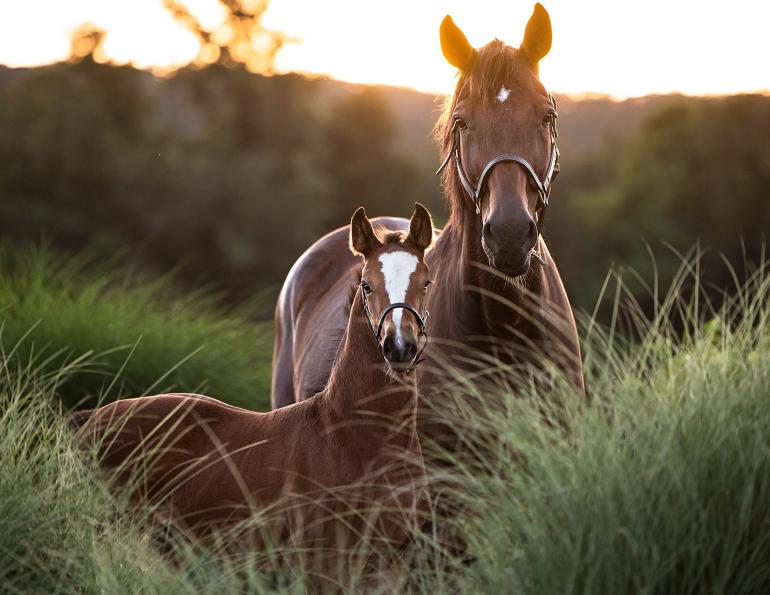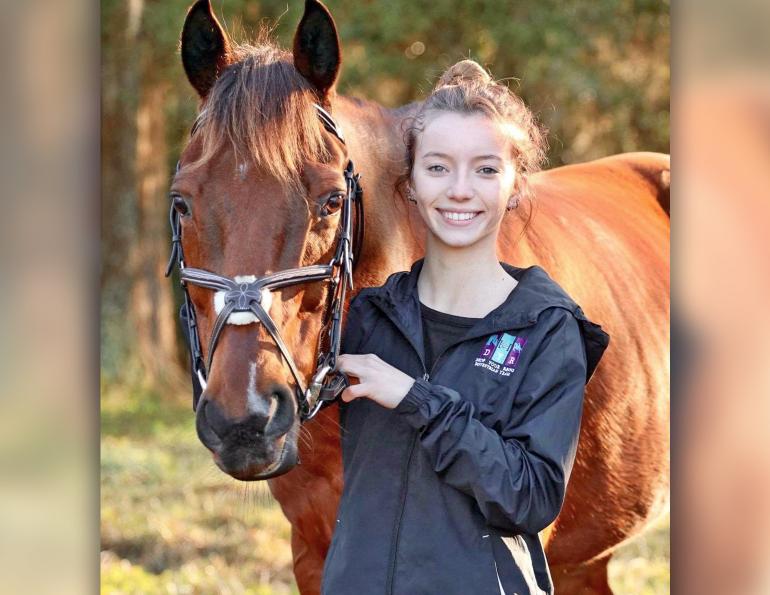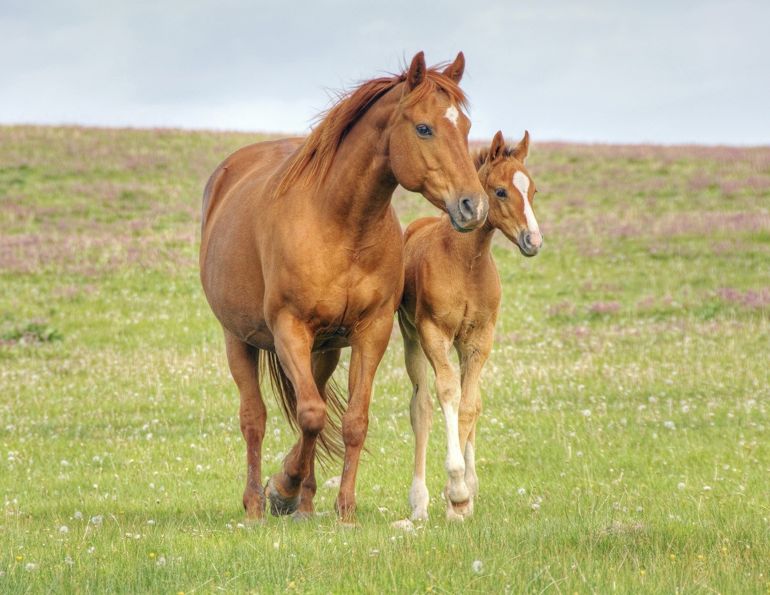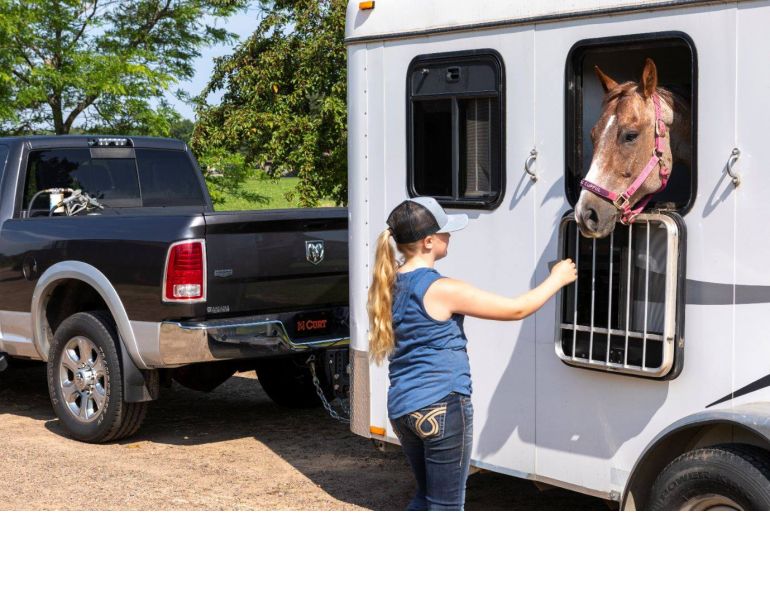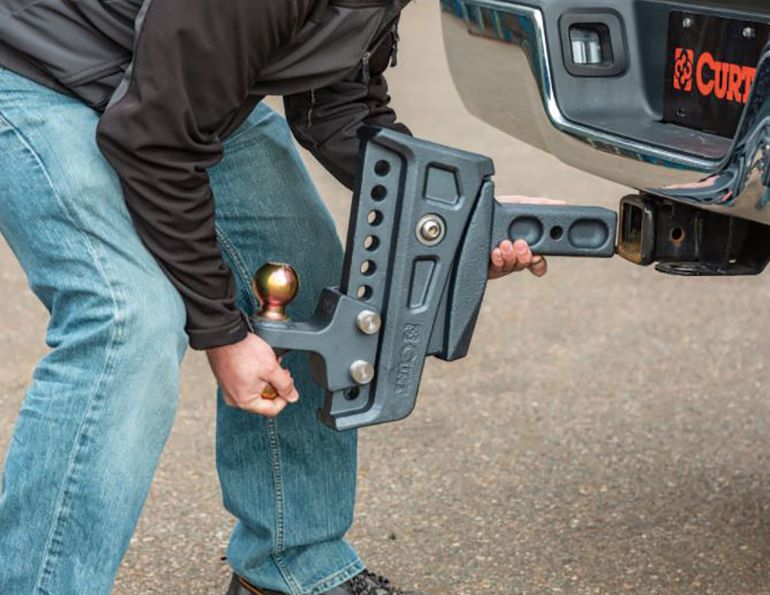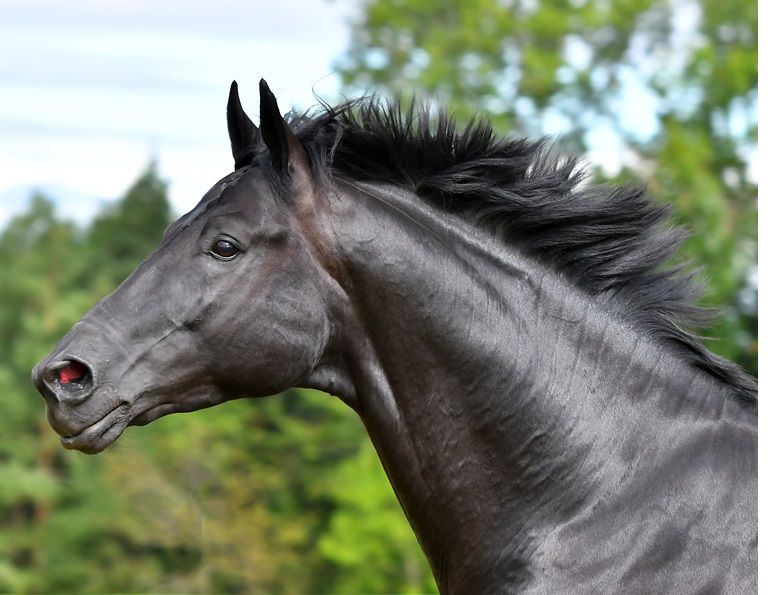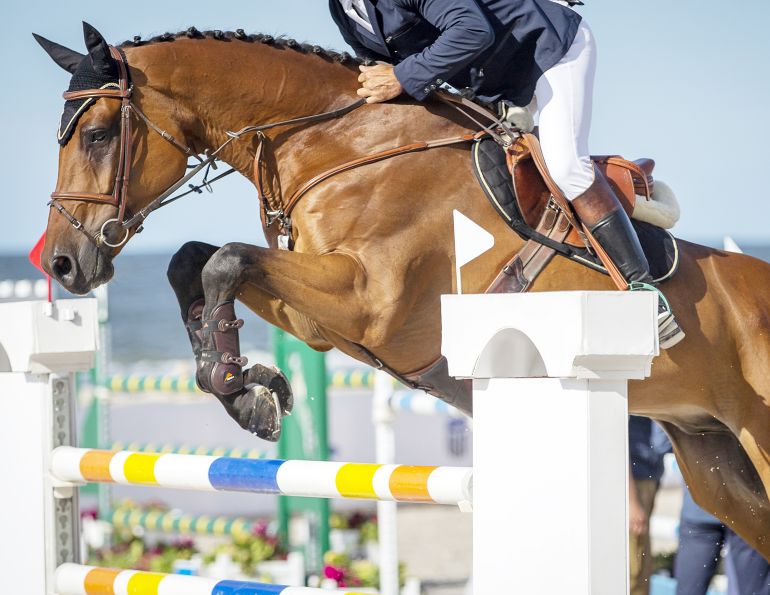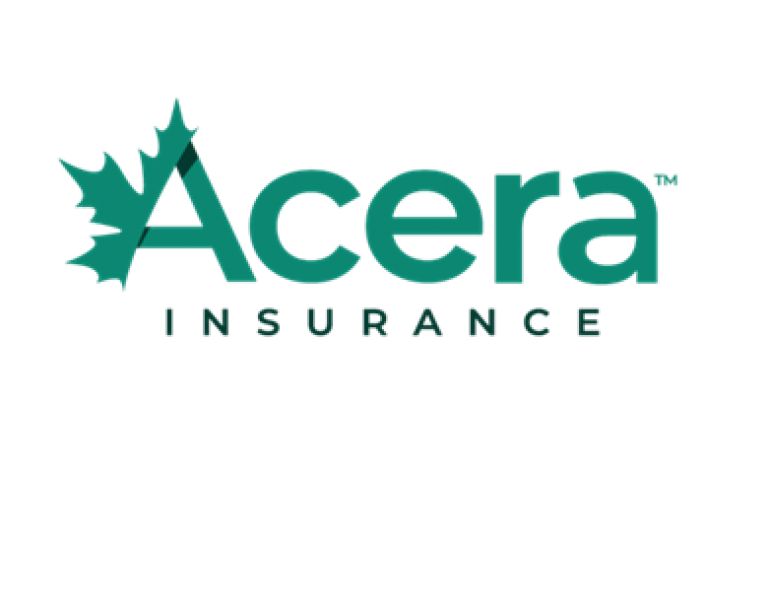Sponsored
Navigating the Mare Owner’s Dilemma
Source: Hyperion Stud, LLC
So, you’re contemplating breeding your mare. As a seasoned breeder of top-notch warmbloods and the owner of Hyperion Stud, LLC, Vicky Castegren knows all about that decision.
“When people consult with me regarding a mare they want to breed, I must be honest with them on all levels,” says Castegren. “We always need to remind ourselves that not every mare should be bred.”
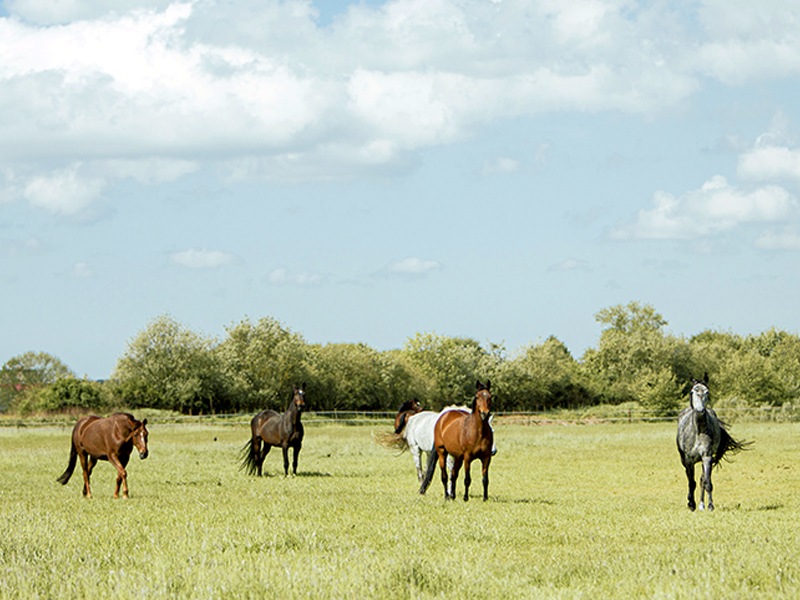
One of Hyperion Stud’s broodmare herds in Germany. Photo: Katariina Kärki
She believes mare owners should have a particular breeding purpose in mind, realistically assess their mare’s positive and negative attributes, and be prepared to learn about genetics. Mare owners also need sufficient financial resources and a realistic attitude towards possible outcomes.
Here are six main considerations.
1. Breeding Goals
“The first question I ask a mare owner who comes to me looking for a stallion is, ‘What’s your breeding goal?’” says Castegren.
Producing top horses begins with determining the rationale and purpose for breeding a mare. Hyperion Stud, LLC has developed their Virginia, USA-based breeding and training operation into a worldwide endeavour by staying true to this principle. They have 21 stallions on their roster, myriad elite mares, plus own world class show jumping, dressage, and three-day eventing sport horses.
“Your breeding goal should be clear,” says Castegren, explaining that mare owners should always plan to produce foals that outclass their mothers.
2. Quality Matters
A foal’s quality depends on both parents. If the mare isn’t top-tier, don’t expect a miracle from the stallion alone.
“Start with a proven pedigree for the production of good sport horses,” says Castegren. “The mare needs to have good conformation and the right attitude.”
Assessing and acknowledging your mare’s strengths and weaknesses are imperative to having realistic breeding goals and selecting the right stallion.
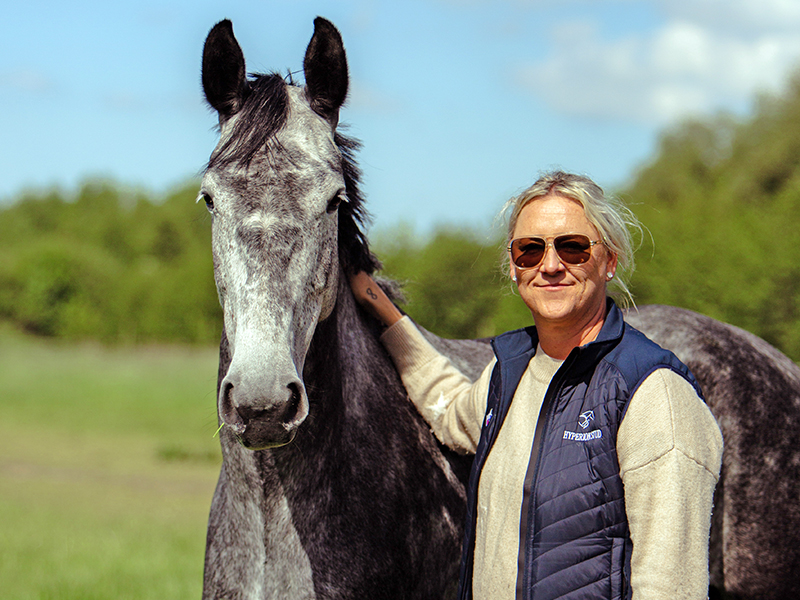
Vicki Castegren and the mare Lorina. Photo: Katariina Kärki
“I don’t want to tell people that they shouldn’t breed their mare,” says Castegren. “But sometimes I have to tell people ‘I’m sorry but the mare is not good enough.’
“If the purpose of breeding horses is to create a generation that’s better than the last one, we need to be selective,” Castegren explains. “We’re not just breeding for four legs.”
So don’t kid yourself. No mare is perfect and adding new genetics via breeding may not fix her flaws.
3. Genes Don’t Always Play By The Rules
“You might have a mare who’s had a good performance career but that doesn’t mean she’s going to have a good breeding career,” says Castegren. “The same goes for stallions. A stallion can be licenced and have a mediocre career so not many people choose to breed to him. But then his foals are amazing, and it turns out he’s a super progenitor. Or a stallion can have a mediocre sport career and produce great mares [daughters] but poor stallions [sons].”
In other words, genetics is an inexact science. However, researching genetics and production patterns can increase the likelihood of achieving breeding goals.
4. Good Health Is Required
It’s tempting to breed a mare that was injured and can no longer compete. But it’s important to consider whether the injury was related to genetics or conformation. Producing injury-prone foals is not good breeding practice.
Also, carrying a foal is taxing. The mare needs to be sound enough to remain comfortable while pregnant, nursing, and mothering a playful foal. A healthy mare will best support her foal’s development.
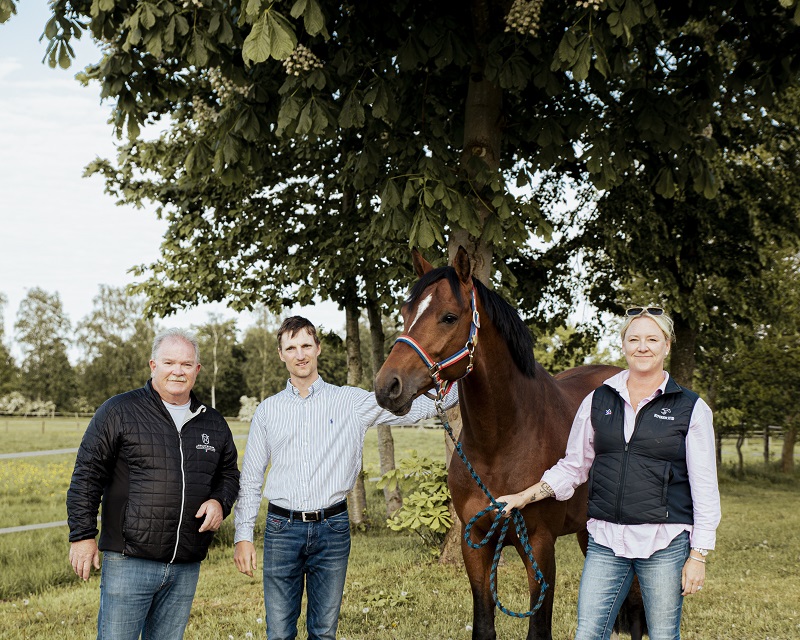
Team photo, L-R: Reece Miller (Hyperion Stud partner and colleague), Alex Liebe (rider), and Vicky Castegren with Urthago (a homebred Holsteiner approved stallion by Uriko). Photo: Katariina Kärki
5. Consider Market Demand
Assess the demand for the type of foal you plan to produce. Horse sports, competitive needs, and rider skills are changing. As such, breeders need to understand market demand and what will likely sell by the time they have a foal, young prospect, or competition age sport horse for sale. Be strategic. Breed for excellence not redundancy.
6. Financial Reality Check
Breeding isn’t a budget-friendly venture. The time lag between breeding a mare and having a foal to sell necessitates significant investment with no guarantee of any return. All kinds of issues can arise; hence, mare owners need to be comfortable with the possibility that they may lose much or all of their investment.
Of course, the opposite is true as well. The foal may be a future superstar and surpass its expected sales value. But it’s prudent to be prepared for either eventuality.
Keeping all that in mind, choosing to breed your mare can be joyful, rewarding, and financially beneficial. But it’s a complex decision that demands introspection, realism, and a dash of idealism.
Visit Hyperion Stud, LLC
Main Photo: Vision, with her foal Chinaro HS II. Credit: Bethany P Photography



